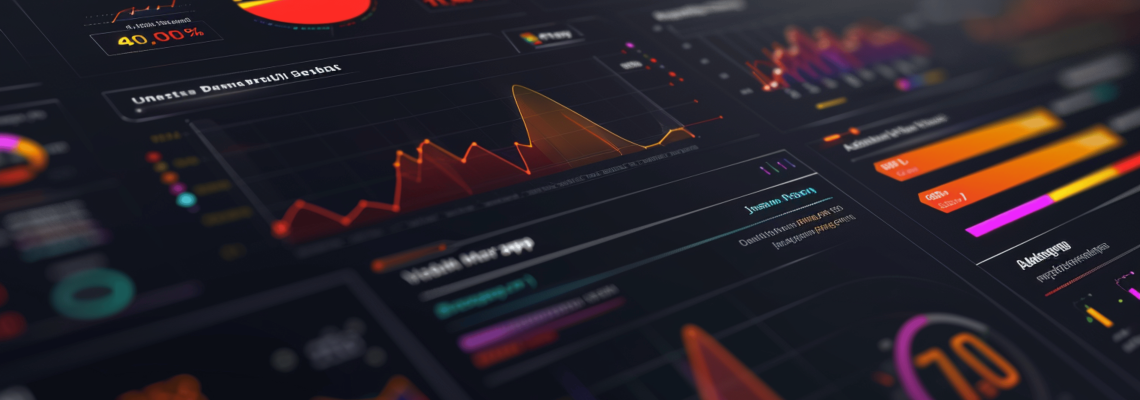Introduction
The automotive industry is undergoing a massive transformation with the advent of Industry 4.0, driven by cutting-edge technologies like Artificial Intelligence (AI), the Internet of Things (IoT), and real-time analytics. These innovations are reshaping production processes, optimizing supply chains, and enhancing vehicle quality. By integrating smart manufacturing, automotive companies can boost efficiency, reduce operational costs, and enable data-driven decision-making.
In this blog, we explore how Industry 4.0 is revolutionizing automotive manufacturing and what the future holds for this dynamic industry.
The Role of AI in Automotive Manufacturing
Artificial intelligence (AI) is a game-changer in modern automotive production. By leveraging machine learning algorithms, predictive analytics, and automation, AI enhances multiple aspects of manufacturing:
1. Predictive Maintenance & Downtime Reduction
- AI-powered predictive maintenance monitors machinery in real-time, detecting early signs of wear and potential failures.
- Reduces unplanned downtime, ensuring continuous production and cost savings.
- Uses historical data and IoT sensors to schedule proactive repairs before breakdowns occur.
2. Quality Control & Defect Detection
- AI-driven computer vision systems inspect components with high precision, identifying even microscopic defects.
- Reduces waste, enhances product quality, and minimizes human errors in inspection.
- Machine learning models continuously improve defect detection accuracy over time.
3. Autonomous Robotics & Smart Automation
- AI-powered robots perform complex assembly line tasks with speed and precision.
- Collaborative robots (cobots) work alongside human operators, increasing efficiency and reducing labor fatigue.
- Automates repetitive tasks, freeing up human workers for higher-value activities.
IoT & Smart Factories: Connected Manufacturing
The Internet of Things (IoT) plays a crucial role in Industry 4.0 by enabling real-time data exchange between machines, sensors, and cloud platforms. Key benefits of IoT in automotive manufacturing include:
1. Real-Time Monitoring & Data Collection
- Smart sensors continuously collect data from factory equipment, providing insights into performance and energy usage.
- Enhances visibility across production lines, enabling quick responses to potential issues.
- Reduces inefficiencies by tracking machine utilization and production bottlenecks.
2. Supply Chain Optimization
- IoT-connected devices provide end-to-end visibility into the supply chain.
- Helps track inventory levels, shipment status, and supplier performance in real time.
- Enhances just-in-time (JIT) manufacturing, reducing excess stock and storage costs.
3. Connected Vehicles & Smart Assembly Lines
- IoT-driven assembly lines adapt dynamically to production demands.
- Connected vehicles enable manufacturers to remotely monitor vehicle health, ensuring continuous improvements post-production.
- Integration with digital twins allows virtual testing before actual assembly, reducing errors and costs.
Real-Time Analytics: Data-Driven Decision Making
Data is at the core of Industry 4.0, enabling real-time analytics for better decision-making. Here’s how analytics is transforming automotive manufacturing:
1. Advanced Process Optimization
- AI-driven analytics predict demand fluctuations, optimizing production schedules.
- Reduces waste and enhances resource allocation efficiency.
- Identifies inefficiencies and suggests process improvements in real time.
2. Enhanced Customer Personalization
- Real-time analytics help manufacturers customize vehicles based on customer preferences and market trends.
- Data-driven insights improve customer satisfaction by enabling faster production and delivery times.
- Personalization extends to smart features, such as software-based performance enhancements in vehicles.
3. Energy & Sustainability Management
- Analytics optimize energy consumption by identifying high-usage patterns in production.
- Enhances sustainability efforts by reducing carbon footprint and material waste.
- Enables factories to automate energy-saving measures, reducing overall operational costs.
The Future of Automotive Manufacturing with Industry 4.0
Industry 4.0 is paving the way for a fully connected, intelligent, and automated automotive manufacturing ecosystem. Here’s what the future holds:
1. Autonomous & AI-Driven Factories
- Fully automated lights-out factories will rely on AI, robotics, and IoT for seamless production.
- Human intervention will be minimal, with AI managing workflow optimization and troubleshooting.
2. Digital Twins & Virtual Simulations
- Digital twin technology will allow manufacturers to simulate and test vehicle designs in a virtual environment before production.
- Reduces time-to-market and enhances production efficiency.
3. Sustainable & Smart Manufacturing
- Industry 4.0 will accelerate the shift towards green manufacturing with energy-efficient processes and renewable energy adoption.
- Recycling automation and eco-friendly materials will become the norm in production.
Conclusion
The automotive industry is embracing Industry 4.0 to drive innovation, efficiency, and sustainability. AI, IoT, and real-time analytics are revolutionizing manufacturing, reducing costs, enhancing quality, and enabling smarter decision-making. As technology advances, we can expect a future where intelligent, connected factories produce high-quality vehicles faster, safer, and more sustainably.
Are you ready to embrace Industry 4.0 in automotive manufacturing? The time to innovate is now!










